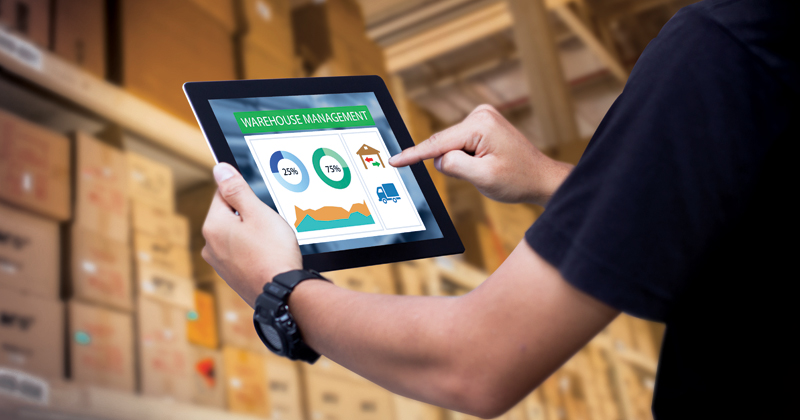
Logistics is a dynamic, growing industry. Last year, it contributed to 7.2 per cent of Singapore’s gross domestic product with a year-on-year growth of 4.8 per cent. With the rise of disruptive technologies such as blockchain and artificial intelligence, logistics is no longer just focusing on the physical movement of goods. Instead, companies are increasingly incorporating technology into their operations to provide global supply chain solutions. How can Singapore companies embark on these trends to stay competitive and relevant in today’s technological space? Here are five key takeaways gathered from industry experts at the inaugural Singapore Logistics Forum 2018.

1. Digitalise
To be more efficient and productive, businesses need to digitise to reap the benefits of data, said Senior Minister of State for Trade and Industry Dr Koh Poh Koon. “You need data to know where your demands and inefficiencies are in order to make sound business decisions, optimise and exploit opportunities,” he said, citing that big shippers, such as PSA Singapore, are rapidly going digital.
Mr Tan Puay Hin, chief executive officer of Singapore Logistics Association (SLA) observed that many small and medium-sized enterprises (SMEs) are keen on riding the technological wave but are intimidated by the process. The SLA will therefore focus their efforts on helping these companies to digitise as part of the association’s new three-year roadmap to push for technology adoption.
“Technology is just an enabler. Companies should understand their needs first—from transportation systems to front-line operations—and then identify which technology is useful for them,” he said.
2. Collaborate
Another key benefit of digitalsing is the ability for companies to collaborate on the same platform. By doing that, companies can easily exchange information and share resources, such as chassis, to reduce road congestion. Mr Vincent Phang, chief executive officer of ST Logistics and executive vice president of Global Logistics, Singapore at Toll Group noted that the majority of logistics companies in Singapore are SMEs. “By working together, the industry can overcome constraints in capacity and resources. And to do that, companies have to digitalised to be plugged in,” he said.
Similarly, Dr Koh encouraged companies to see themselves as one unified player rather than many fragmented players given Singapore’s small ecosystem. “There is strength in numbers, and by collaborating, you will have a fighting chance to anchor more flow of goods through Singapore,” he said.
3. Internationalise
For Singapore to be a key node in the global supply chain, it is important for companies to look beyond the country. China-based Zall Group, Global eTrade Services and Singapore Exchange recently entered into a joint venture to establish the Commodities Intelligence Centre (CIC), the first global B2B commodity e-trading platform in Singapore. To support the trade flows on CIC’s platform, a memorandum of understanding was signed with local logistics stalwarts PIL Logistics, Warehouse Logistics Net Asia and YCH Group, where they will provide integrated supply chain solutions such as shipping, freight forwarding and warehousing.
“We have moved up the value chain, offering supply chain solutions to many of our global customers,” said Mr Robert Yap, executive chairman of YCH Group. “Companies cannot just think of surviving in Singapore alone. Instead, they should look at Singapore as a test bed, build their competencies and then go out, especially to the ASEAN region. Integration is happening, and if you are not plugged in, your market will be very restricted,” he said.
4. Innovate
To compete more effectively locally and globally, companies must be ready to harness new technologies and ideas. “Autonomous and electric vehicles will change the way goods are transported, while blockchain technology has the potential to transform various processes, from warehousing to delivery and payment, to create more robust and transparent supply chains,” Dr Koh said.
Local UT-Ways Freight Services is a successful example of how time and cost savings can be achieved through the use of technology to speed up or replace manual operations. After adopting Robotic Process Automation (RPA) for their freight information submission and retrieval, they reported time savings of 67 per cent per air waybill submitted.
5. Train
A highly-skilled workforce is necessary for transformation to take place, and companies must be willing to invest in their employees. Mr Vincent Phang, CEO ST Logistics Group, shared that oftentimes it is the company, not the worker, that falls behind in technology.
“Companies must provide their workers with opportunities to enable change. Singaporeans are always striving for better qualifications, so our academia and institutions are important to support these aspirations,” he said. “For instance, how can a forklift operator develop his skills to become a manager operating an automated vehicle in an optimised warehouse?”
The answer lies in skills training. To do that, companies can tap into government initiatives such as the Adapt and Grow Professional Conversion Programme under Workforce Singapore, as well as enroll their employees for classes conducted by the Republic Polytechnic that covers a range of topics such as RPA and Smart Logistics.

